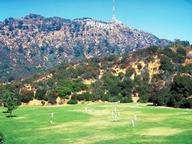Quiz Answer Key and Fun Facts
1. The host for the 8th Academy Awards ceremony was the first to do so who already had earned an Oscar himself. Who was it?
2. Before entering the acting profession, this year's Best Actor winner joined the British army at age 14, got kicked out for being too young, became a Canadian Heavyweight boxer, and later rejoined the British military for World War I. Although English by origin, he won the Oscar for his role as Irishman Gypo Nolan in John Ford's "The Informer." Who was the winner?
3. She won the Best Actress Oscar for her role as a down-and-out actress named Joyce Heath in "Dangerous." Who was this actress, immortalized in song for her eyes?
4. A new category introduced for the 8th Academy Awards was Best Dance Direction. Dave Gould took home the Oscar for his work on two musical films: "Folies-Bergère" and what purported follow-up to the Best Picture winning film from the 2nd Academy Awards?
5. The Oscar for Best Score was presented to the sound department of a film studio that became defunct in 1959, despite being one of the "Big Five" Golden Age studios. Who won for "The Informer"?
6. The winning number for Best Song was "Lullaby of Broadway," with music written by Harry Warren and lyrics by Al Dubin. What movie was it from?
7. Best Story laurels went to Ben Hecht and Charles MacArthur for their film inspired by the life of publisher Horace Liveright. What was the name of the film?
8. Screenwriter Dudley Nichols won the Oscar for Best Adapted Screenplay for adapting "Mutiny on the Bounty," but refused the award.
9. The Oscar for Best Art Direction went to a film about a love triangle where one man sends his rival off on a dangerous mission during wartime. What film (and art director(s)) won?
10. A magical script gave the backdrop for the film that won the Oscar for Best Cinematography. What film (and cinematographer) won?
11. The Academy Award for Best Film Editing went to one of the literary classics prevalent at 1936's Oscars. Ralph Dawson's editing work was recognized for which film?
12. An honorary award was presented to someone "for his distinguished creative achievements as director and producer and his invaluable initiative and lasting contributions to the progress of the motion picture arts." Who was the recipient, best known for his films "The Birth of a Nation" (1915) and "Intolerance" (1916)?
13. The Oscar for Best Assistant Director was shared by two recipients at this 8th Oscars ceremony. Clem Beauchamp and Paul Wing supported director Henry Hathaway in a film that tells of British soldiers defending the northwest frontier of India against rebellious natives. What was the name of the film?
14. Born John Martin Feeney, the winner of Best Director won for his work on a film about the Irish War of Independence. And the Oscar went to... whom?
15. The Best Picture winning film was based on a historical novel and not on recorded historical facts. What film took home the Oscar?
Source: Author
reedy
This quiz was reviewed by FunTrivia editor
spanishliz before going online.
Any errors found in FunTrivia content are routinely corrected through our feedback system.

